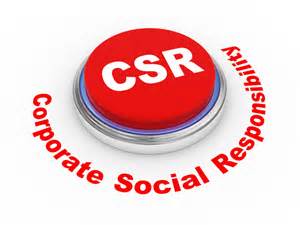Some questions about Corporate Social Responsibility (CSR) as it relates to a more comprehensive picture of aid and development efforts
What does assistance look like from the recipient’s perspective?
In 2012, MSF published In The Eyes of Others: How People in Crisis Perceive Humanitarian Aid, edited by Caroline Abu-Sada. I have used selected chapters from this book in my classes in recent years and it is recommended reading for all students in our Periclean Scholars program. In the very last chapter author Antonio Donini states, “Humanitarianism started off as a powerful discourse; now it is a discourse of power, both at the international and community level (p. 190).”
Indeed. At play is the control and flow of resources, both human and material, inexorably complicated by cultural (mis)understandings and (mis)perceptions.
 It might be useful to revisit the question of what comprises the aid and development sector from a more comprehensive “in the eyes of others” perspective, i.e., from the view within the villages and communities across the world that are the focus of aid and development efforts. One critical question is whether all those who seek to partner and ‘help’ are part of a confusing and dysfunctional cacophony or comprise a healing, harmonious set of responses. What comprises the array of people and organizations seeking to help? A comprehensive list of all the entities and actions intending to support economic and/or social equity initiatives in any given location would be long. [Note: I recognize that aid and development are inherently different but argue that frequently they far are from separate categories of response and rather lie on a very fluid continuum.]
It might be useful to revisit the question of what comprises the aid and development sector from a more comprehensive “in the eyes of others” perspective, i.e., from the view within the villages and communities across the world that are the focus of aid and development efforts. One critical question is whether all those who seek to partner and ‘help’ are part of a confusing and dysfunctional cacophony or comprise a healing, harmonious set of responses. What comprises the array of people and organizations seeking to help? A comprehensive list of all the entities and actions intending to support economic and/or social equity initiatives in any given location would be long. [Note: I recognize that aid and development are inherently different but argue that frequently they far are from separate categories of response and rather lie on a very fluid continuum.]
Below is my effort listing major categories:
Corporate
- CSR-International
- CSR-national
- Domestic regional/local corporations (CSR)
Education
- High school and university/college ‘service’ trips, local and national community outreach
- Fulbright exchanges
- In country educational institution outreach
Self-help
- Remittances
- Neighbor to neighbor support
- Local community groups
- Local philanthropic support
Traditional aid and development organizations
- Big box NGO’s such as OXFAM, World Vision, MSF, etc.
- Small “boutique” NGO’s (aka MONGOS)
Governmental organizations
- United Nations
- National government schemes (the US Peace Corps, for example)
- In country nation/state/municipality government schemes
Faith efforts
- Faith communities-local
- Faith communities-national
- Faith communities-International
Given this long and likely incomplete list, it is almost inevitable that there will be a high degree of redundancy in terms of support with various well-intended schemes covering the same needs. That said, the call for more communication and coordination seems both obvious and impossible. How can we move the needle toward a more effective system?
On that note, what is known about how one main player -corporate CSR- operates?
Some questions related to CSR efforts
Detailed answers to most of the questions below will be difficult to get, and then only on a case by case basis. The suggestive list below may allow useful research to move in a positive direction.
- What is the typical pathway to become part of the CSR teams?
- How are CSR staff recruited?
- What training and/or background is required?
- What steps are taken to maximize cultural sensitivity?
- How does CRS staff attrition/retention compare to other divisions within the corporation?

- How are non-CRS staff recruited, trained, and placed with regard to volunteer activity related to CSR?
- To whom do senior CSR staff report?
- Are there professional development opportunities for CSR personnel related to aid and development work?
- Are there standard measures of community impact used?
- To what extent is branding emphasized by CSR staff when messaging their outreach?
- Are there internal corporate standards/rubrics for ethical and/or effective aid and development?
- Are there CSR policies for dealing with corruption w/in countries of focus?
- How do corporate CSR leaders in various locations around the world coordinate with other aid and development organizations (both domestic and international) and with host governments?
- How do corporate CSR leaders communicate and coordinate with their counterparts industry-wide?
- Is there a need for a set of guiding principles for all corporate CSR similar to the Core Humanitarian Standards (CHS) that exist within the aid and development industry?
- What are some of the more difficult challenges with regard to CSR outreach?
Getting objective, systematic and thorough answers to the above questions for any one corporation is a place to start, and perhaps that might be a useful next step to get us closer to a world where aid and development efforts are -and are perceived to be in the eyes of those for whom these actions are intended- to more effective, coordinated, and ethical.
Please let me know if you have any thoughts or feedback to the above.


 Follow
Follow